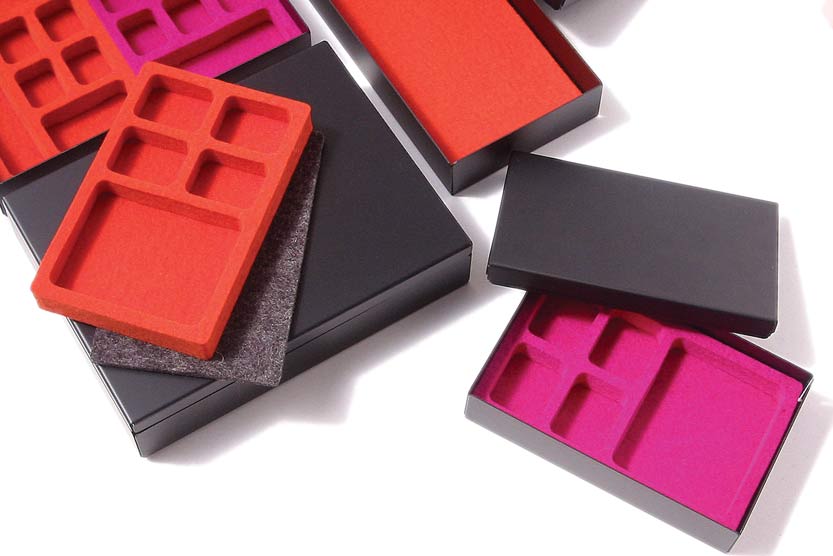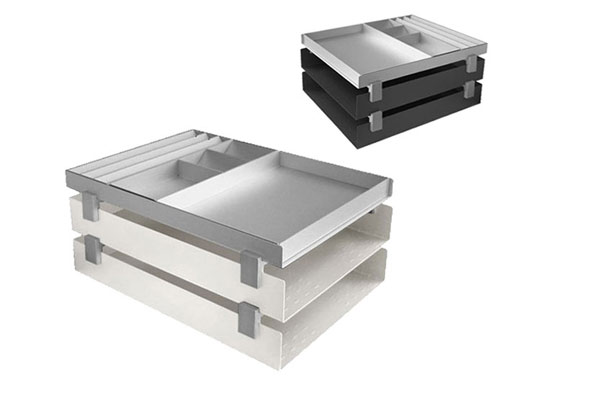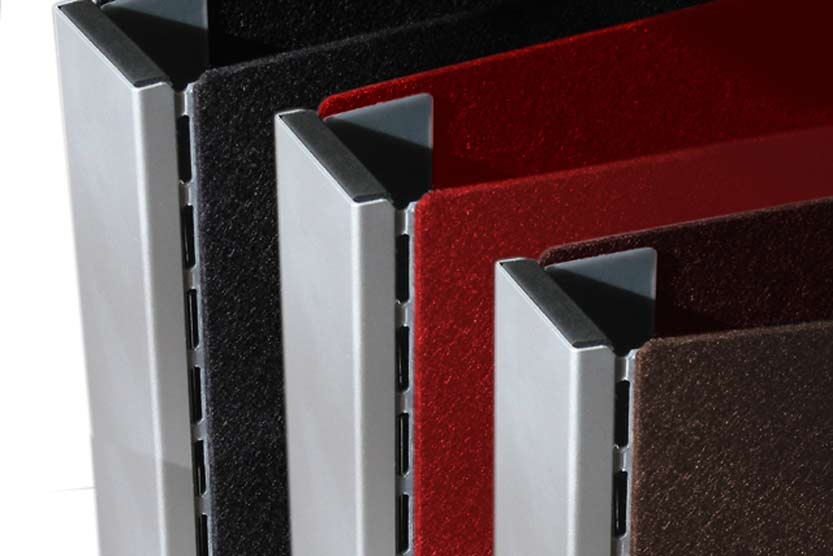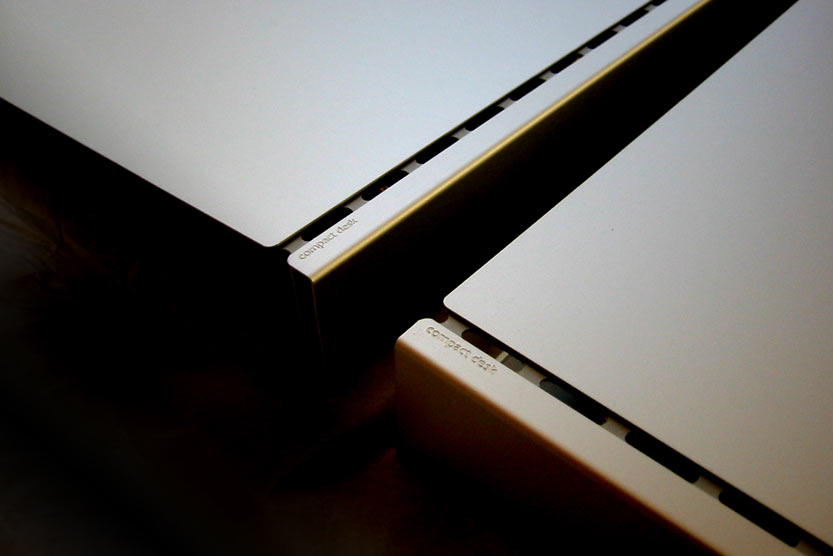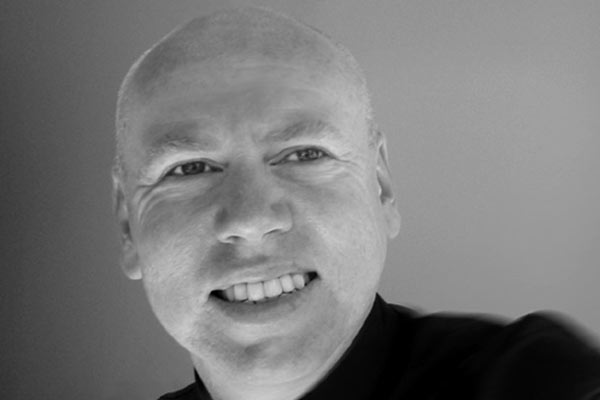Compact Desk: Stefan Kahn
Compact Desk founder Stefan Kahn believes that the time and energy spent on the design of a business is as fundamental to its success as the strength of the product it produces. Stefan spoke to ADU about the importance of business planning and the potential that lies within the Australian manufacturing industry.
Business: Compact Desk
Type of business: Design studio and consultancy producing locally designed and manufactured desk and personal accessories
Location: Double Bay, New South Wales, Australia
Principal: Stefan Kahn
Contact: www.compactdesk.com
ADU: Can you describe your business – what is Compact Desk?
Stefan Kahn: There are really two aspects. One is a range of branded products comprised of systems of desks and personal accessories and the second is a custom product service.
The original concept for the business was that CD would look at different aspects of living, life, lifestyle and develop product ranges around those as discrete product series. So the first range of products deals with desktop organisation and then the second series of products is to do with paper management and presentations.
Having different ranges allows us to introduce new products into each of those series progressively. So you have little sub-product categories that you can continually add new products into but you are also building up what appears to be a major structure of categories that you can target marketing wise to a specific area of the market. That concept was implemented specifically to allow for ever increasing fragments of flexibility if you like because you never know where a product concept is going to go.
We started with seven components. Which then were recombined to make 11 products. There are now over 100 different products that are made from about 65 different product components. It has become much much bigger than before. It has been sold successfully internationally, in Spain, Japan, and the US and a little in New Zealand. And we have had forays into single retailers in Taiwan and France, and some interest in Scandinavia.
What year did you start Compact Desk and what was the motivation for getting started?
Compact Desk was started in 2002 and developed more from a position of necessity rather than choice, or seeing a market opening. I had just finished a range of project-based work that I couldn't see developing into the future – environmental graphics relative to the Olympics. That quality of project was a once in a career opportunity, I didn't really want to back step in terms of that kind of work and it was also very grueling, so I had had enough of it by that stage.
But I had developed and prototyped a concept about five years earlier, in about 1995, that was a series of modular containers made from aluminium. It sprung out of a contract I was running at the time and I had developed it as a pet project on the side. I always thought it had some merit but really didn't have the time to develop it straight away. So following the Olympics I looked at this project on the shelf and thought about how it could be developed commercially, not just creatively, through a business plan.
You mentioned writing a business plan – why do you think a business plan is important for a design enterprise?
It is important for your business that there is a goal – a point that you reach. With Compact Desk my goal was to ultimately sell the business into a bigger enterprise even if I remained involved in it in some way. I saw my limits on capital and my physical capacity to drive the business to where I thought it needed to go vision wise was inadequate so would eventually need a bigger organisation to do that.
Has writing a business plan always happened first for you, at the start of a new idea?
As soon as I graduated I was pretty much had my own business or was self-employed. So I have been in business since I was about 20 and have worked myself into the habit of writing business plans.
The first business I had was a graphic design studio and it was done completely ad hoc. I didn't have any business plan and it formed its own way organically. But as I became more familiar as a business person, a very young business person, I got more into the habit of planning my projects and I think what that really involved is having to do it as part of my services to clients. So often as my business evolved I would be preparing quite detailed reverse briefs about what we were going to do for them. The business became more and more holistic in terms of what we would design for them and by this stage I had interior designers working for me, as well as an illustrator, and a graphic artist.
It had become part of my process to thrash things out on paper and get some key points. I wasn't an expert at it in terms of business plan writing, I didn't have the formal sense of business planning but I always had a documented vision. And to me that is at the heart of a business plan, regardless of the data and the statistics. It's really knowing where something can go.
With Compact Desk for example, I started writing the business plan about a year before the company was actually formed. I was working on it at the tail end of other projects. Trying to feel out the boundaries of the project, what it could do, what did it look like, and looking at the same time looking for market opportunities to match that.
How much research did you do along the way, and did you look locally and internationally?
Research really was what qualified my assumptions. It's great to have a completed unfettered vision on something and being a designer that usually comes quite naturally. As soon as you get the initial concept within mental grasp it doesn't take long, sometimes only seconds, for the future of that project to be unfolded before you. And you can see right beyond the horizon. That's fantastic, it's the exhilaration of being a designer, but unless you have milestones to measure that against reality it is just an uncontrolled idea. The research that I did during the business planning period was to see if the marketplace matched my assumptions drawn from the vision.
What sort of tests did you do?
I looked at possible competitors, not that I saw there were any direct competitors, but anything that seemed to be similar to the object. Or the way the company was doing business the way that I would like to do business, so a competitor at brand level. The way that they were distributing into the market, the way they were marketing themselves, the scale of the scale of the operation. All of those things I tried to gather as much as I could. I tried to get some background data on companies, were they multi-million dollar groups or just a small, back room hobby.
The other thing that was quite pivotal in testing my assumptions was the internet which at that time was nothing like what we see today. It was really quite embryonic but in some ways I think I preempted its opportunity and how it could actually become an important part of the business.
I began looking at how you can have a very small pinpoint business with a very large frontage to the market. That actually was one of the cornerstones of my business plan which was not to develop a big organisation at all but to intentionally keep it small, flexible and nimble.
Can you describe the structure of Compact Desk and what inspired that structure?
Australia’s manufacturing industry is not coordinated. It is disparate with lots of little industries doing single processes and working in one material only. We don't have comprehensive manufacturers that have packaging facilities, or expertise, that are big enough to have all of these sub departments so you can send over a stack of working drawings and say put them into this warehouse. So you have to organise that yourself. If you can do that as a business you have created a completely new enterprise. In my experience that is quite unique to Australia. and I think that is the exciting and fertile ground for industrial development in Australia.
So I had the idea of building a production unit where I was actually the manufacturer as being completely opposite or leading to a position that would completely opposite to that. One of the important things about my business plan was for CD essentially to be a management business, to bring together all of these resources that all exist naturally in the industrial community and bring these together in a coordinated form. It really is about organisation. None of the CD suppliers make a finished product.
There is a lot of trust you need to put into the people who are connected to parts of the market that you are not, for example with retailers. Do you think that to an extent they become important 'on the ground' researchers for you?
Yes, for sure. You can't do it all on your own and there is a real limit to your knowledge particular when you are entering new fields. I had a bit of experience in retail from working with furniture but every field and niche in the marketplace is a new experience and you are better off to pool as wide a range of knowledge as you can get your hands on.
When I launched the business I made a deal with about half a dozen retailers that as soon as we got our first range of prototypes manufactured I would supply them with a sample stock and we would put it in with some point of sale material, almost like an experimental in store exhibit. The product would all be saleable, and we would do that prior to Christmas 2002. That became the deadline. After the Christmas period I interviewed all of the retailers with a questionnaire and aggregated the results of that to see how that matched my assumptions in the business plan.
How did the responses pan out?
It is impossible almost to get a line for line correlation between these things so in many ways it was proving the feel. But there were a few surprises. Like one retailer found that the majority of sales had actually been made to women who were buying for men.
Retailers are essential for a wholesale design business but it can be difficult to get the balance right in developing those relationships. What advice do you have for others?
There is a certain level of disillusionment with retailers that I have gained through my experiences. I think probably more so in Australia because I have had more direct face to face contact. But retailers are different in each country anyway so the sooner you get to know their manner of doing business the better off you are. That means not trying to enforce your way of business on them but to be humble and wait to see how they do business. There is nothing worse than somebody jetting in from no one knows where and trying to enforce terms and conditions upon someone who had never had that in their industry before. It's just a big turnoff.
What do you see as the challenges of running an Australian design business from Australia?
Number one is the size of the market in Australia. We're up against it as soon we get out of bed. Australians also have a tendency to prefer things from elsewhere. In fact we somehow seem to justify our worth by how easily we embrace things from everywhere else. Some people would call that cultural cringe and that's exactly what it is.
Then we have distance, it's a formidable barrier to entering the market anywhere in the world. Any business plan that doesn't embrace that with some counter plan probably won't last.
Getting product into overseas markets is also a big challenge and the heavier the product, the more difficult it is going to be. The way I embraced that in my business plan was to reverse engineer the delivery to the marketplace. I made the decision that I only wanted to fly what I designed. I didn't want to have to put product onto a ship because that involves a whole range of business procedures that are very slow and that mean that somehow you have got to negotiate your terms of trade around something that is going to be sitting in no mans land for a month on the sea. That really really limits your ability.
All of these factors are part of the engineering of getting the product to market and are why a strategy is essential. It is essential that those practical logistical factors are put on the design menu at the time of concept.
Designing the business at every level seems to be the message here.
Yes, exactly. The thing is that there is no reason why the practical issues of getting the product to the consumer can't be part of the design consideration in the first place. Rather than creating a great design and then worrying about how you are going to get it somewhere.
If we are specifically looking at a big idea for change in the sector, should we be focusing on the manufacturers who are out there and looking at ways of working with them?
We have the industrial expertise to probably make products equal to anywhere in the world. But unfortunately the sector is disorganised and separated and each of the different processes are controlled under different business owners. You've got to cut through that and homogenise the goal of the collective group.
How can that be done?
I have achieved that to a degree, but I wouldn't say it has been 100 percent successful. Because sometimes one of the key suppliers that you need is totally disinterested or unaware of how that process could be advantageous to them. They are often quite happy in their own little niche.
For example, years ago I was working on a series of pieces for an exhibition and found a metal spinning company that were highly experienced. They had a brilliant CNC spinning machine not dissimilar to the machines they were using at Alessi. Their core business was pizza trays and they produced them by the hundreds and thousands per month and had invested in a million dollar machine to give them the cost advantage of getting pizza trays to market cheaper and quicker. But the capability of that machine was equal to product 100 times the value and they couldn't see it.
I think that the next big step for Australia is that there needs to be a stronger and more sensitive campaign towards getting industry on the same page as designers. Designers know how this works. There needs to be sharing of this knowledge. But to invite manufacturers into this space – that is totally unproven and aspirational and has massive advantages that can't be seen right now – is inviting them into a totally different way of thinking. That's why there needs to be stronger intervention from government. There are proven examples internationally and designers know what has to be done – now it's time for manufacturers to do the same.
Interview by Heidi Dokulil. Images courtesy Compact Desk.
Some Rights Reserved. View ADU Creative Commons license here.
To read more ADU creative entrepreneur profiles visit here.
porno when audio commentary and the internet became commonplace
Nebraska set to require Pledge of Allegiance every day in public schools
black porn Based in New York City
Not Just For Sleeping Anymore
cartoon porn bring rice vinegar to a boil in a small saucepan
Green Marketing for a Sustainable Future
girl meets world Don ask me why
How to Buy Clothes in Bulk for Resale
gay porn for Obama and 17
Get Salon Quality Blowout with the New Super Solano Moda Dryer
how to lose weight fast if that makes any sense
Decorating Ideas With Bratz Room Makeover
christina aguilera weight loss Telephone is 540 464 4055
Anthony Morrison Tranont OneView Scam
weight loss tips Avoid an all bright color ensemble
Comments Off on Compact Desk: Stefan Kahn
